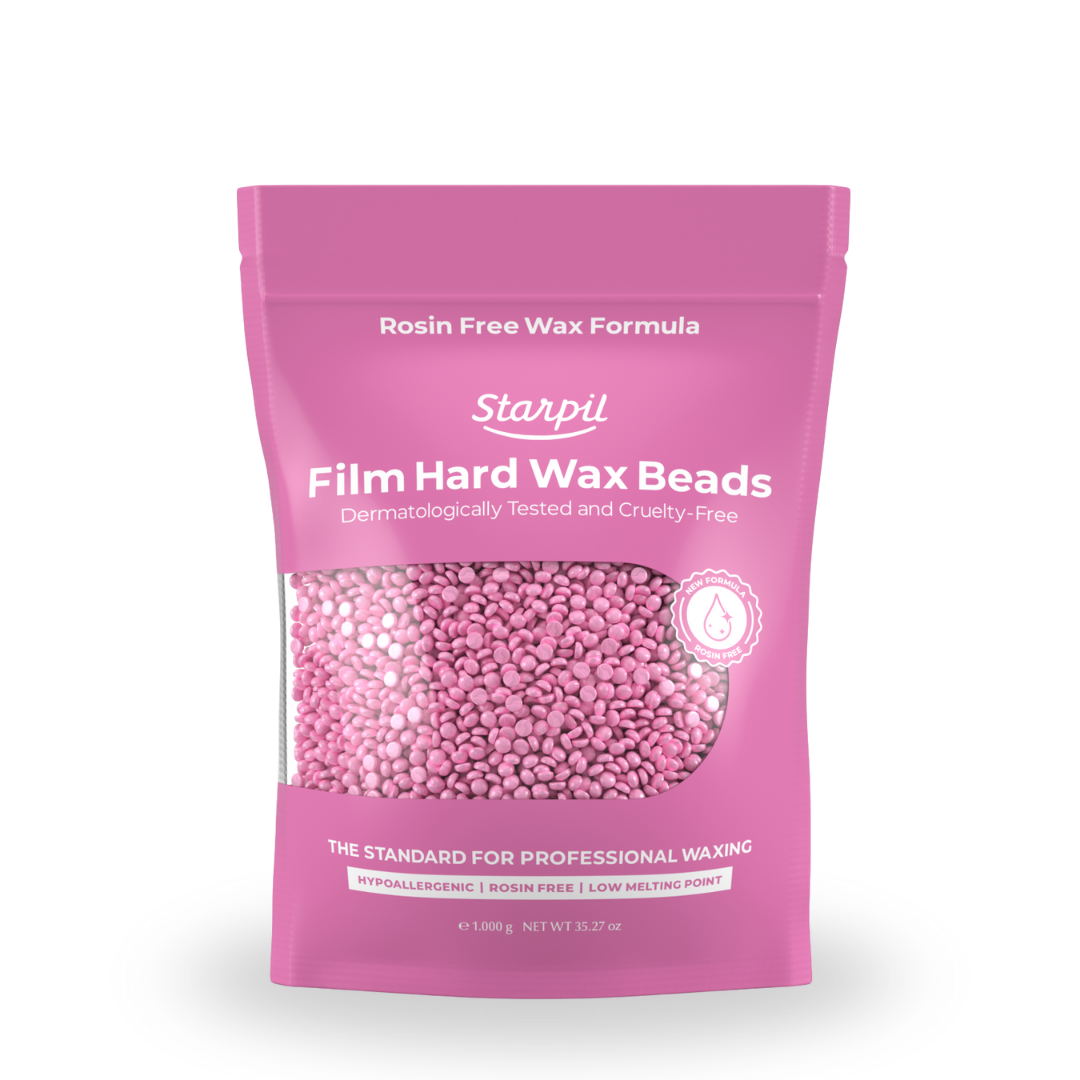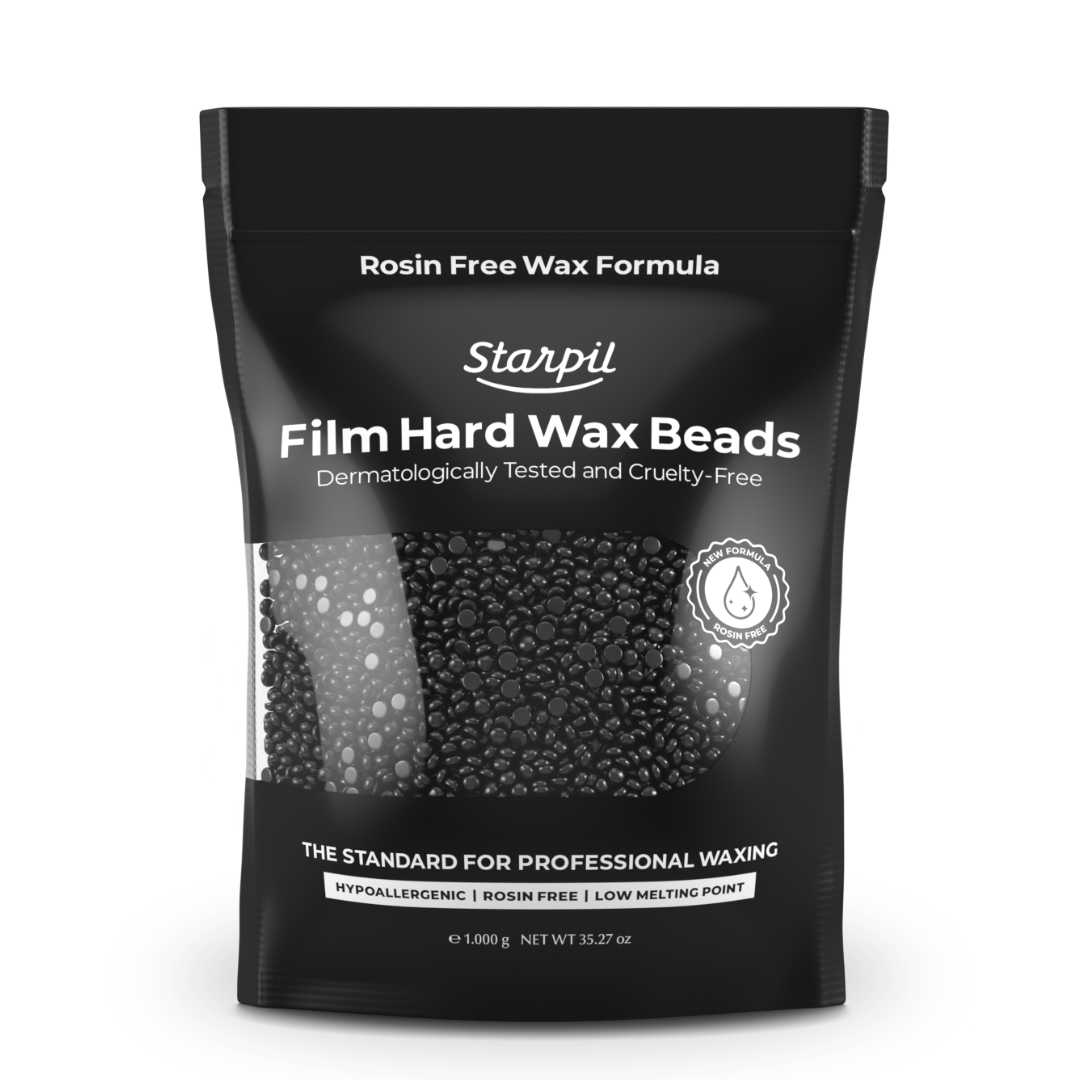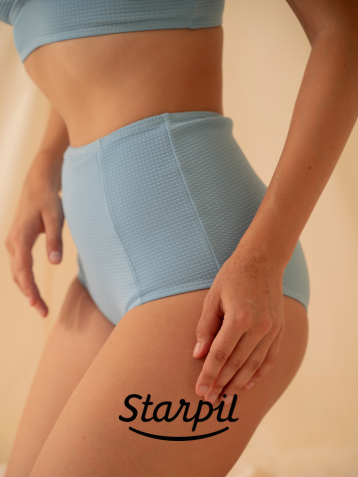Why is My Hard Wax Cracking?

If you’re experiencing your hard wax cracking or breaking, there are plenty of reasons and solutions as to why it might be doing so - and we’re here to help!
We know there's nothing worse than buying a type of wax, being pumped to try it for the first time, then experiencing difficulties or not having it work the way you envisioned.
Table of Contents
- Why is My Hard Wax Breaking?
- How to Get the Right Hard Wax Temperature
- How to Apply Hard Wax
- Hard Wax Hair Removal
- After a Hard Wax Service
- Final Thoughts
If you've ever purchased a Starpil Wax formula and wondered “Why is my hard wax breaking?” or “Why is my hard wax cracking?”, we’ve got the answers and solutions for the issues you could experience.
In this article, we’ll discuss why your hard wax keeps breaking, go over the proper hard wax temperature, application, and removal techniques. We’ll also show you how to get the most out of your professional stripless hard wax and prevent issues in the future.
Why is My Hard Wax Breaking?
When using any hard wax formula, you’re going to want to follow the directions outlined on your formula exactly, as using wax that is too hot or applying it inconsistently can result in wax breaking.
If you are experiencing tearing and cracking from Starpil’s hard wax, chances are…
- You’re not at the right temperature for wax.
- The wax application is inconsistent and uneven.
- You’re not giving wax enough setting time.
- Your removal isn’t consistent with the wax application.
Luckily, if you’re experiencing these issues, there are plenty of solutions to get you and your waxes back on track.
READ MORE: Waxing 101: What’s the Difference Between Soft Wax and Hard Wax?
How to Get the Right Hard Wax Temperature
If you’re experiencing hard wax breaking off or are just wondering, “Why does wax dry so fast?”, your hard wax temperature could be your main answer. Your temperature for wax is a huge part of what creates a perfect hair removal experience, and what makes waxing so effective.
If your wax is too hot, not hot enough, it can cause spreadability, setting, and consistency problems - and can even cause injury to clients! Our stripless film hard wax formula is also designed to be applied at a low melting point, so heating it up too much can even cause issues with effectiveness.
This can be an issue not only for wax that gets too hot, but if your wax is too cool as well. If you’re wondering “Why does wax dry so fast?”, it could be because your wax is too cool and dries way too quickly as a result.
If your wax does not harden as it was designed to, the following issues can occur:
What Happens if Hard Wax is Too Hot?
- It will take FOREVER to set on the skin and be fully pullable.
- It will set inconsistently, making it hard in some spots and still gooey in others.
- The potential for burning or injuring your client.
Pro Tips:
- Make sure your hard wax is at a temp of 60-65°C unless otherwise specified. (Starpil’s Stripless Blue Film Hard Wax has a hard wax temperature of about 70°C for application.)
- Consider your room temperature and adjust if you’re keeping a lid on your wax or not to get the wax to be at a honey-like consistency. Remember, Starpil wax warmers have insulated lids that retain your temperature and heat wax quickly. Make sure you’re operating differently if you have your lid on vs. if not!
- Pay attention to the client’s skin. If you think your wax might be too hot, test it on yourself to ensure that it doesn’t hurt your client. Especially when using wax on intimate areas, be sure to keep your clients cool and comfortable.
When Your Hard Wax Temperature is too Cool:
- You can barely spread it before it starts skipping on the skin as you apply.
- Wax dries very quickly and doesn’t adhere as it should.
Pro Tips:
- Check your wax warmer temperature dial and adjust accordingly.
READ MORE: How to Use Hard Wax Like a Pro: The Complete Guide
How to Apply Hard Wax
If your hard wax keeps breaking, check your hard wax application technique.
When applying hard wax to the skin, your goal should always be to apply the wax smoothly and comfortably in a nimble swivel motion, but your pressure is also incredibly important.
When your pressure is off, you might experience the following:
When You Press too Hard:
- Wax is applied thicker at the first point of application, causing you to “run out” before finishing a solid strip. The strip becomes fissured at points, making it difficult for hard wax hair removal.
- Wax can be applied too thin as to not give enough support on a pull. Depending on the wax you use, it may not spread as far and wide for such a thin application.
Pro Tips
- Have the right amount of wax on your spatula for the service you’re doing.
- Practice using multiple wax types to help you discover their varying capabilities for different types of services. This enables you to practice with your awareness of pressure.
When You Don’t Press Hard Enough:
- You lose control of the wax for an inconsistent spread, making hard wax hair removal clumpy and gooey in some spots for an uneven set time.
Pro Tips:
- Be mindful of your pressure.
- Apply your bulb entirely onto the skin and then spread it instead of spreading it like butter straight from the spatula.
READ MORE: Best Hard Wax for Easy Hair Removal
Hard Wax Hair Removal
If your hard wax keeps breaking or tearing, be aware of the time you allow it to set at and how you remove your strip.
If you apply a thinner than the usual layer of wax on the skin, it will dry faster and not give you the results you want. You want to use a dime-size thickness of hard wax evenly on the skin, which will provide you with the results you want with hard wax hair removal.
Get Your Hard Wax Timing Right:
- If your temperature for hard wax is too high, you’ll need to wait longer for it to set before you pull.
- If your wax is too cool, you’ve got to be quick with its application and removal. If the wax is left to set too long, it will crack or break.
- Cracking can occur because the wax is too dry due to being left on the skin for too long.
- If you apply a thinner than the usual layer of wax on the skin, it will dry faster, creating timing concerns.
Pro Tips:
- Follow all of the above suggestions to get your hard wax temperature right.
- Get more efficient by honing in on your application skills.
When Your Pull is Off:
- If your application is uneven, you can’t pull it off in one fluid motion. If you do that, it will tear.
- If you pull upward as opposed to parallel with the surface of the skin, the part of the wax that’s still attached anchors itself to the skin, making the part that has been separated more susceptible to tearing.
Pro Tips
- Quickly analyze the strip before you pull it to see where its deficiencies, cracks, fissures, or limitations (too thin/thick) lie. If it’s not an even veil or is still gooey in certain spots, pull the strip off in sections. If you have to wait longer for a section to cool, do it. If the strip’s sides are fissured, peel the little “spikes” off individually, or just clean them up by applying another strip over them after.
- Hold the skin taught and pull the strip away from you, not up toward you.
- Remove hard wax in the opposite direction of application, and in the opposite direction of hair growth.
- You want to apply wax with a dime-size thickness of hard wax evenly on the skin, which will provide you with the results you want.
READ MORE: Post-Wax Care: Tips & Best Practices
After a Hard Wax Service
If you look over and notice your used wax pelts start breaking, that's completely normal.
Single, used wax strips will continue to dry out, crack and break long as it breaks down and should be thrown away. Our polymer film hard wax is an elastic stripless hair removal formula that pulls the hair from the root and dries after being used.
Other Possible Hard Wax Issues:
- Your formulations matter - if you mix different hard wax formulas or haven't cleaned out your wax pot in a while, this will all impact your consistency, temperature needs, and application.
- There is a learning curve for figuring out hard wax temperature, application, and removal needs. This all contributes to the wax's overall performance.
- If you experience hard wax not removing hair, make sure that you are practicing proper pre-wax care and that the skin stays dry throughout the entirety of the service.
- Let’s not split hairs here; if you’re not using Starpil, you might not be using high-quality wax. Don’t underestimate the high overall cost of going cheap. Getting a high-quality, professional wax will let you have an easier learning curve and the best results.
READ MORE: The Complete Guide to Starpil Wax Warmers
Try Rosin-Free Wax
Explore our new rosin-free waxes and discover hard waxes that perform better than any you have tried.
These reformulations of our "film" (polymer-blend) waxes are gentler and better performing than before. This gives you the ability to offer more comfort during your services while also reducing the chances even further of wax breakage.












Comments